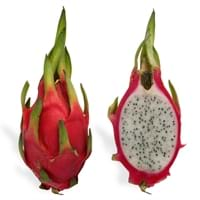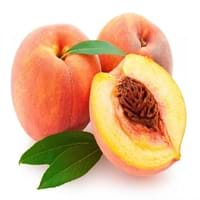Health Benefits
Anti-oxidant properties, Anti-aging benefits, Maintains healthy cholesterol level, Weight loss properties
Cancer prevention, Heart care, Improves eye vision, Reduces stress, Regulation of heart rate
General Benefits
Helps in weight loss, Suppresses Arthritis
Anti oxidant properties, Eye care
Skin Benefits
Anti-aging benefits, Heals sunburn, Treatment of acne
Heals sunburn, Reduces wrinkles, Treatment of skin diseases
Hair Benefits
Treatment of colored hair
Prevents hair loss
Allergy Symptoms
NA
Abdominal pains, Anaphylaxis, Breathing difficulty, Diarrhea, Dizziness, Hives, Itching, Lightheadedness, Nasal congestion, Nausea, Swelling of mouth, tongue or lips, Tingling sensation in mouth, Vomiting, Wheezing
Side Effects
NA
Allergic reaction
Lactating Women
Not Available
Yes
Best Time to Eat
Any time except an hour after meal, Don't consume at night and before bed
As a snack in the late afternoon, Eat the fresh ones, avoid mixing with any other foods, don't eat after meal., Morning time (before lunch)
Vitamin A (Retinol)
Not Available
Vitamin B5 (Pantothenic Acid)
Not Available
Vitamin B6 (Pyridoxin)
Not Available
Vitamin B9 (Folic acid)
Not Available
Vitamin C (Ascorbic Acid)
Vitamin E (Tocopherole)
Not Available
Vitamin K (Phyllochinone)
Not Available
Lutein+Zeaxanthin
Not Available
Phytosterol
Not Available
Calories in Fresh Fruit with Peel
Calories in Fresh Fruit without Peel
Not Available
Not Available
Calories in Frozen Form
Not Available
Calories in Dried Form
Not Available
Calories in Canned Form
Not Available
Calories in Pie
Not Available
Type
Berry, Citrus, Fruit vegetable, Melon, Tree fruit, Tropical
Tree fruit
Season
Early fall, Summer
Autumn, Summer
Varieties
Selenicereus megalanthus and Hylocereus polyrhizus
Reliance, Sweet Scarlet, Spring Snow, Sugar May, Santa Rosa, Red Beauty, Glowhaven, Cresthaven and Redhaven Peaches
Color
Magenta, Pink
Pink, Red, White, Yellow, Yellowish-orange
Inside Color
White
Yellow
Origin
Central America, Mexico
China
Soil Type
NA
Sandy loam, Well-drained
Climatic Conditions
NA
Cold, Warm
Facts about
NA
- In china, peaches are considered as a symbol of good luck.
- From 1982, august is National peach month in USA.
- In roman times, Peaches were also called as Persian apples, as people assumed that they originated from Persia.
Other Countries
NA
Greece, Italy, Spain, United States of America
Top Importer
China
Germany
Top Exporter
Vietnam
Spain
Botanical Name
Hylocereus undatus
Prunus persica
Synonym
Pitaya, Red Pitahaya, Night blooming Cereus, Strawberry Pear, Belle of the Night, Conderella plant
Not Available
Subkingdom
Tracheobionta
Tracheobionta
Division
NA
Magnoliophyta
Class
Not Available
Magnoliopsida
Subclass
Liliidae
Rosidae
Order
Caryophyllales
Rosales
Family
Cactaceae
Rosaceae
Species
H. undatus
P. persica
Generic Group
Cactus
Rose
Difference Between Dragonfruit and Peach
We might think that Dragonfruit and Peach are similar with respect to nutritional value and health benefits. But the nutrient content of both fruits is different. Dragonfruit and Peach Facts such as their taste, shape, color, and size are also distinct. The difference between Dragonfruit and Peach is explained here.
The amount of calories in 100 gm of fresh Dragonfruit and Peach with peel is 60.00 kcal and 39.00 kcal and the amount of calories without peel is Not Available and Not Available respectively. Thus, Dragonfruit and Peach belong to Low Calorie Fruits and Low Calorie Fruits category.These fruits might or might not differ with respect to their scientific classification. The order of Dragonfruit and Peach is Caryophyllales and Rosales respectively. Dragonfruit belongs to Cactaceae family and Peach belongs to Rosaceae family. Dragonfruit belongs to Hylocereus genus of H. undatus species and Peach belongs to Prunus genus of P. persica species. Beings plants, both fruits belong to Plantae Kingdom.









